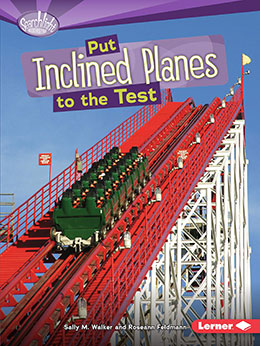
Put Inclined Planes to the Test
About the Book
What do staircases, dump truck beds, and ramps have in common? All of them are inclined planes! Inclined planes are simple machines. They help us to do jobs more easily. But don’t take our word for it. Put inclined planes to the test with the fun experiments you’ll find in this book. As part of the Searchlight Books™ collection, this series sheds light on a key science question: how do simple machines work? Hands-on experiments, interesting photos, and useful diagrams will help you find the answer!

Searchlight: Simple Machines
written by Sally M. Walker
and Roseann Feldmann
Lerner Classroom, Aug 2011
paperback: 978–0761378655
40 pages, ages 8 and up
Buy the Book
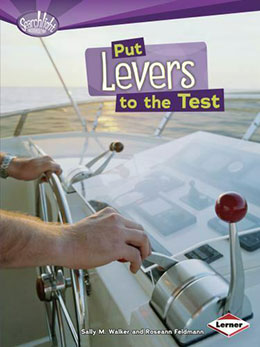
Put Levers to the Test
About the Book
What do hammers, wheelbarrows, and brooms have in common? All of them are levers! Levers are simple machines. They help us to do jobs more easily. But don’t take our word for it. Put levers to the test with the fun experiments you’ll find in this book.

Searchlight: Simple Machines
written by Sally M. Walker
and Roseann Feldmann
Lerner Classroom, Aug 2011
paperback: 978–0761378662
40 pages, ages 8 and up
Buy the Book
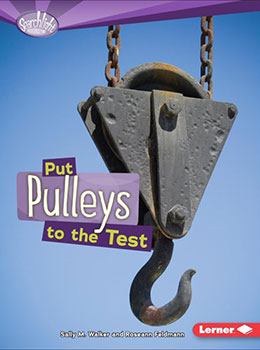
Put Pulleys to the Test
About the Book
What do flagpoles and some window blinds have in common? They use pulleys to perform work! Pulleys are simple machines. They help us to do jobs more easily. But don’t take our word for it. Put pulleys to the test with the fun experiments you’ll find in this book.

Searchlight: Simple Machines
written by Sally M. Walker
and Roseann Feldman
Lerner Classroom, Aug 2011
paperback: 978–0761378662
40 pages, ages 8 and up
Buy the Book
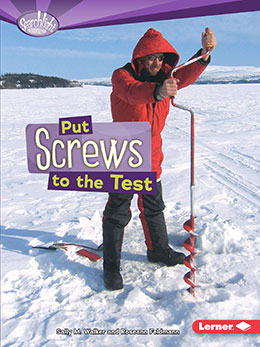
Put Screws to the Test
About the Book
What do jar tops and water-bottle lids have in common? Both of them are screws! Screws are simple machines. They help us to do jobs more easily. But don’t take our word for it. Put screws to the test with the fun experiments you’ll find in this book.

Searchlight: Simple Machines
written by Sally M. Walker
and Roseann Feldmann
Lerner Classroom, Aug 2011
paperback: 978–0761378686
40 pages, ages 8 and up
Buy the Book
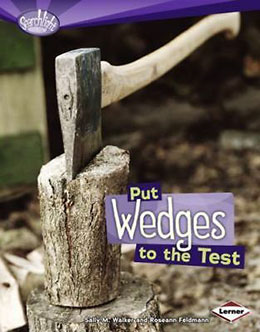
Put Wedges to the Test
About the Book
What do a doorstop, a butter knife, and the front of a boat have in common? All of them are wedges! Wedges are simple machines. They help us to do jobs more easily. But don’t take our word for it. Put wedges to the test with the fun experiments you’ll find in this book.

Searchlight: Simple Machines
written by Sally M. Walker
and Roseanne Feldmann
Lerner Classroom, Aug 2011
paperback: 978–0761378693
40 pages, ages 8 and up
Buy the Book
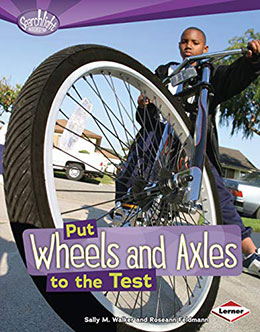
Put Wheels and Axles to the Test
About the Book
What do bicycles, doorknobs, and screwdrivers have in common? All of them use wheels and axles to perform work! Wheels and axles are simple machines. They help us to do jobs more easily. But don’t take our word for it. Put wheels and axles to the test with the fun experiments you’ll find in this book.

Searchlight: Simple Machines
written by Sally M. Walker
and Roseann Feldmann
Lerner Classroom, Aug 2011
paperback: 978–0761378709
40 pages, ages 8 and up
Buy the Book
Reviews for the Series
“Clear explanations, relatable examples, and effective visuals.” (The Horn Book Guide)
“This series includes lots of facts and examples of the concept of work, presenting the facts from the simple to the more complex. Large colorful pictures give the reader examples of work that a child could relate to, and a list of everyday household items that are needed to perform each example is included.” (Library Media Connection)
“The texts provide clear explanations and the experiments add a significant degree of interest. The color photographs are crisp and clear, as are the diagrams.” (School Library Journal)
“The vocabulary and science concepts are appropriate for upper elementary school level students. However, with adult help, the books might also be used for even younger students.” (Science Books & Films)
“Because the working of simple machines is a common content area and the topic is well-developed, teachers will appreciate this series. In this book, the authors include hands-on activities that use everyday items, photographs of people using simple machines, and easy-to-read diagrams that explain how pulleys work. There are practical, everyday examples of simple machines throughout the book. The first chapter defines work by a scientist and provides examples of how simple machines are used to make work easier. Other chapters focus on gravity, friction, machines, and types of pulleys. The scientific content is clearly described in the text, and the description is enhanced by photographs of people using a variety of pulleys to do work. The content is written so that students in grades three to five can comprehend the science concept. This is a good book for a classroom or school library.” (NSTA)

